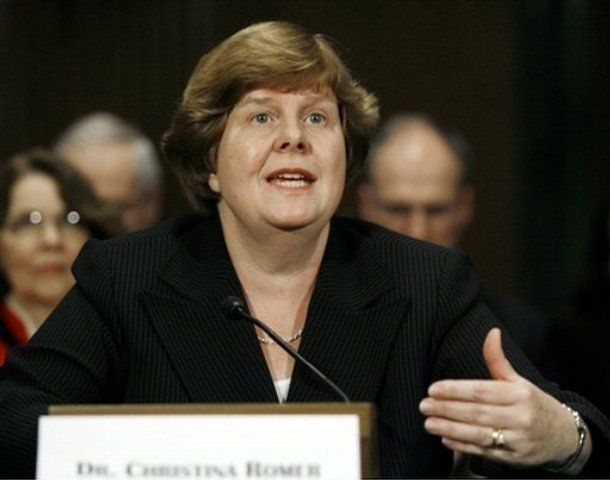
One of President Obama's senior advisers argued on Monday that a national public plan would have a noticeable impact on lowering the costs of the health care system yet the evidence wasn't yet available to claim that a trigger-proposal would do the same.
Dr. Christina Romer, Chair of the Council of Economic Advisers, said that she had "personally been quite persuaded that the public option can be an important source of cost growth containment," during a speech at the Center for American Progress.
Romer cited a case study of counties in California where the introduction of a government-run plan helped bring down overall costs in the private market.
"One of the things I've learned is that if you look at the state of California for example, where people on Medicaid have a lot of the counties what they do is to contract with HMO to provide care to Medicaid patients," said Romer, in response to a question posed by Adele M. Stan,
Washington Bureau Chief of the site, AlterNet. "And there are a lot of what we call two-plan counties where there are two plans in each counties. And in some counties there are two private plans and in some counties you have one private plan and one publicly run plan. And the interesting thing is that cost growth in the counties with a public and a private is indeed slower than in counties with two privately run plans. It is a small sample... that is one of the things that is giving me a sense that it could be something that could genuinely slow the growth rate of costs."
The remarks reflect a consistent refrain from the administration that a public-run insurance option is an effective vehicle for lowering costs within the health care system while expanding coverage to those who are uninsured. Coming amidst reports that the president is working with Sen. Olympia Snowe, (R-ME) to implement a public plan that was triggered into existence by economic conditions, however, the statement could have political ripples. Romer would not make the same predictions of cost-containment when asked about the trigger, saying that there was insufficient data as to how it would work.
"As I said, the evidence even on public and private,I think, isn't all there still. It is something where we are still collecting evidence. Knowing what a trigger will do is, I think, beyond anything that we have a lot of evidence on. The other thing is I don't want to get out ahead of the legislative process.... other than saying this is something we are working through, Congress is working through, and we will see how it comes out."
In an effort to sell a more progressive reform package, House Speaker Nancy Pelosi (D-Cali.) has repeatedly cited Congressional Budget Office data that shows the public plan could save more than $100 billion in the health care system. That figure is reduced by $85 billion when legislation requires that the Department of Health and Human Services negotiate rates with providers -- a proposal favored by conservative Democrats in the House.
In addition to praising the public plan's ability to reduce costs, Romer also endorsed the proposal in her prepared remarks.
Another institutional structure that the president has emphasized as a potentially important source of cost containment is the inclusion of a public health insurance option in the exchange. Such an option would give individuals and small businesses the choice of a publicly-managed health insurance plan that competes on a level playing field with private insurers. Reports by the U.S. Government Accountability Office show that markets for health insurance are often highly concentrated, especially in rural states, giving insurers a high degree of market power and the ability to raise premiums. A public health insurance option would be a credible entrant in concentrated markets, and would serve as a competitive, alternative choice, constraining the ability of insurers to raise premiums, and thus containing the growth rate of.
